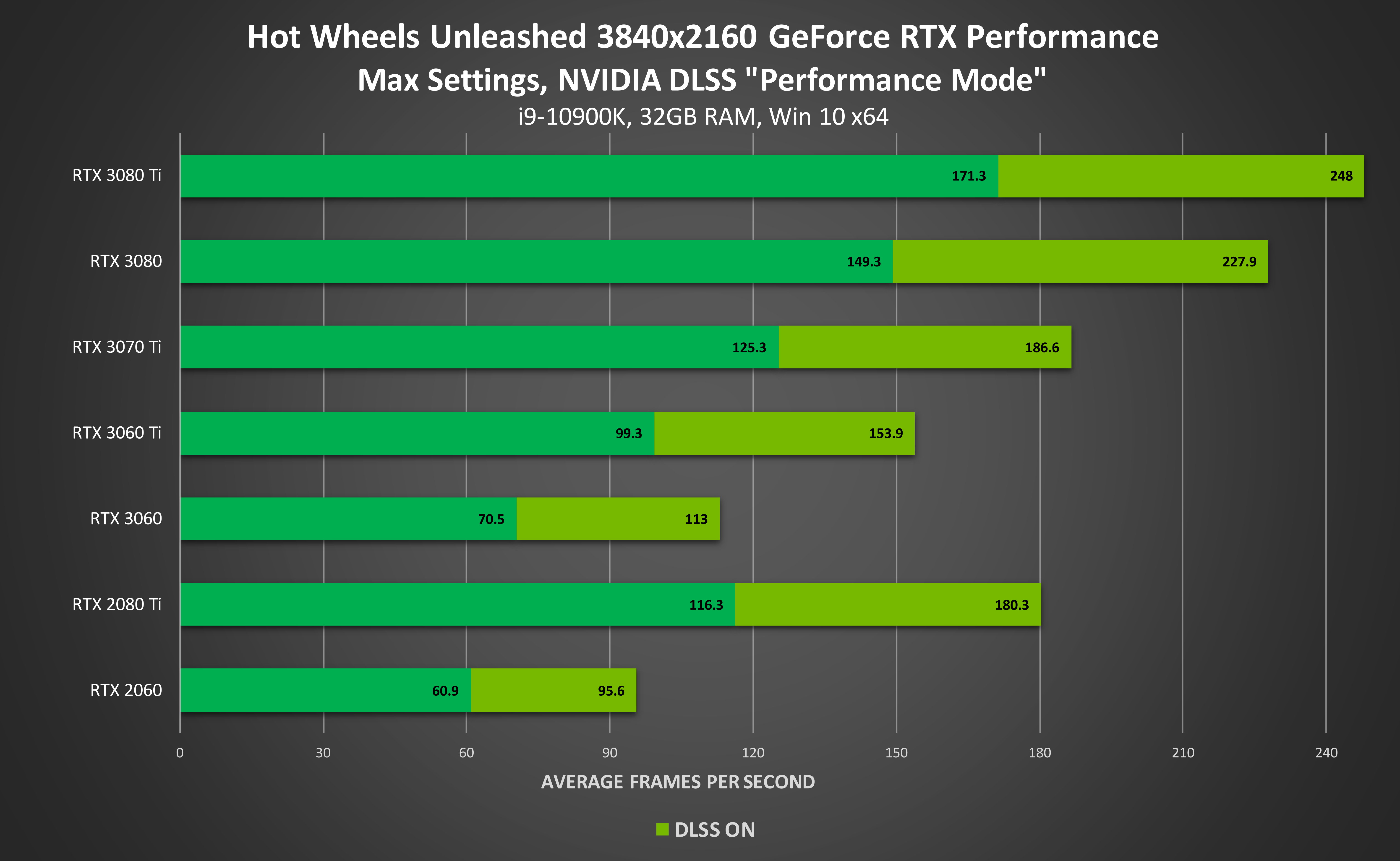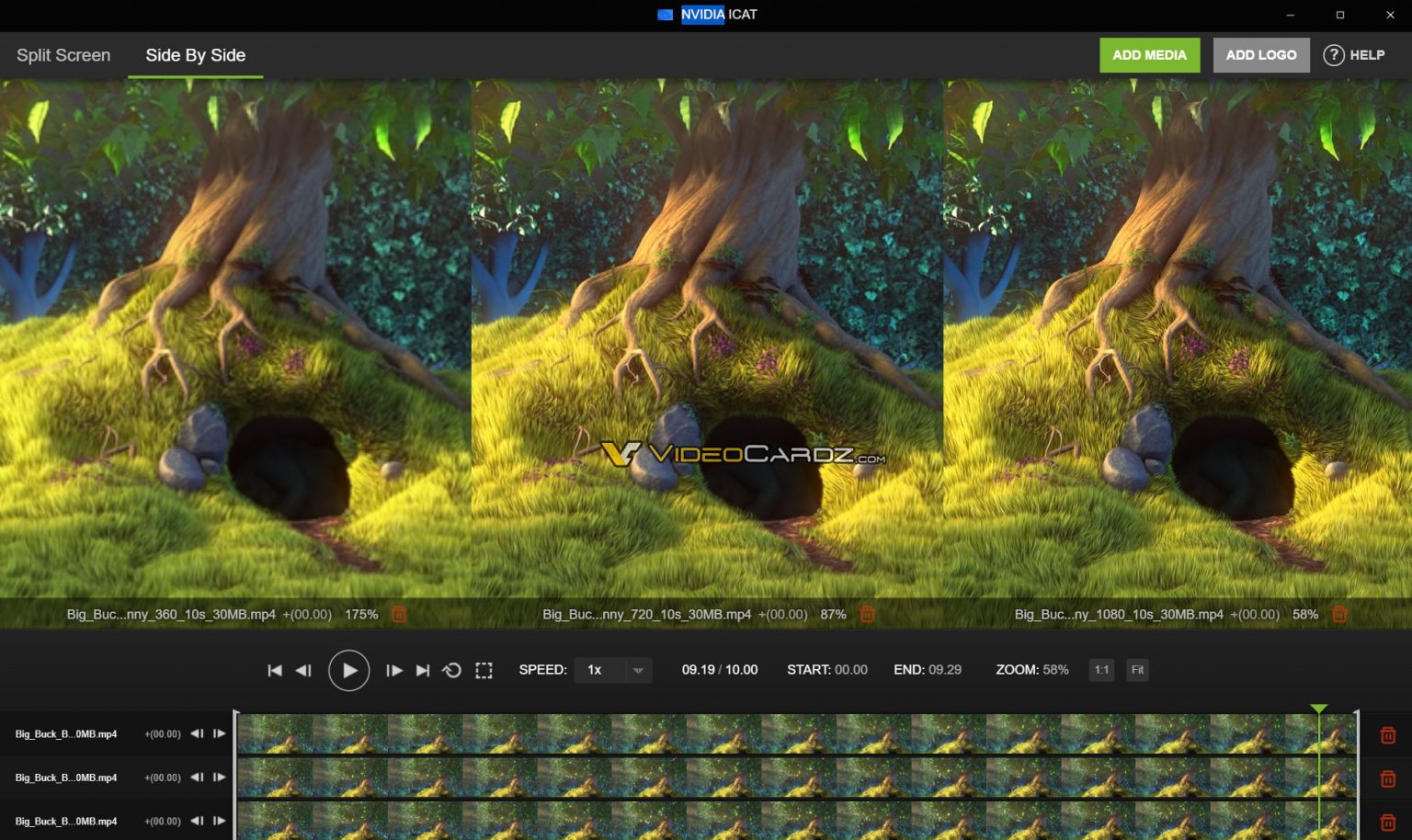Install the app
How to install the app on iOS
Follow along with the video below to see how to install our site as a web app on your home screen.
Note: This feature may not be available in some browsers.
You are using an out of date browser. It may not display this or other websites correctly.
You should upgrade or use an alternative browser.
You should upgrade or use an alternative browser.
Nvidia DLSS 1 and 2 antialiasing discussion *spawn*
- Thread starter DavidGraham
- Start date
-
- Tags
- nvidia
DegustatoR
Legend
https://www.dsogaming.com/pc-performance-analyses/call-of-duty-vanguard-native-vs-dlss-vs-fsr-benchmarks-comparison-screenshots/ said:Contrary to COD: Black Ops, DLSS works like a charm in Vanguard. DLSS does not blur any textures, and also comes with a Sharpening filter. Still, there is a minor issue that could annoy some. Similarly to other games, DLSS brings additional specular shimmering/aliasing, which is evident on metal objects. On the other hand, the performance increase is too big, making DLSS essential for gaming at 4K resolutions.
D
Deleted member 2197
Guest
DLSS support.
D
Deleted member 2197
Guest
Remember having some cars as a kid.
FPS look pretty good even without DLSS.


Remember having some cars as a kid.
FPS look pretty good even without DLSS.

That's a game that would benefit from DLAA. That said, I bet 120fps feels great in it too.
DavidGraham
Veteran
DLSS 2 Quality is running faster than the old DLSS 1 in Shadow of the Tomb Raider, while also delivering image quality comparative to native.
D
Deleted member 2197
Guest
Bright Memory: Infinite will be available tomorrow with DLSS and 5 different ray tracing effects.
Three New Games Come Out Tomorrow With Nvidia Ray Tracing, DLSS and Reflex | Tom's Hardware (tomshardware.com)According to tests by Nvidia, running this new title at 4K max settings is nearly impossible with most RTX GPUs. Only the RTX 3080 and RTX 3080 Ti managed to squeeze out a playable 30FPS. But with DLSS performance enabled, performance more than doubles on most RTX GPUs.
The RTX 2060 sees the most noticeable advantage, brining its frame rate from just 7FPS native to 34.1 FPS in DLSS performance mode.
But frame rates improve drastically in 1440P, with DLSS in quality mode. Despite using a higher quality DLSS setting, all GPUs manage to have higher FPS at 1440P than at 4k with DLSS performance mode.
Finally Nvidia demonstrates DLSS's capabilities at 1080P with its entire lineup of RTX 30 series laptop GPUs, ranging from the RTX 3050 Ti to the RTX 3080. With DLSS set to quality mode, even the low-end RTX 3050 Ti managed to squeeze out a solid 60FPS.
The five Ray Tracing features include RT caustics, reflections, refractions, Ambient Occlusion, and Shadows. Any screen space techniques have also been upgraded to ray tracing, to give effectively all the reflections in the game ray tracing support.
Due to the vast amount of graphical fidelity in the game, the developers of Bright Memory: Infinite have also implemented Nvidia's ReSTIR Global Illumination technique to cut down the amount of rays required for each frame to improve frame rates.
ReSTIR does this with a specialized path sampling algorithm that is optimized for highly parallel GPU architectures. The algorithm is designed specifically to improve indirect lighting quality without taking a huge performance hit.
Last edited by a moderator:
DLSS 2 Quality is running faster than the old DLSS 1 in Shadow of the Tomb Raider, while also delivering image quality comparative to native.
Isn’t that the WCCFTech guy.
D
Deleted member 2197
Guest
Yeah. Few months ago I saw him do a similar video ... "Technical Contributor".Isn’t that the WCCFTech guy.
Last edited by a moderator:
D
Deleted member 2197
Guest
NVIDIA launches image quality comparison and analysis tool - ICAT - VideoCardz.com

NVIDIA ICAT will join existing tools such as LDAT (Latency and Display Analysis Tool), PCAT (Power Capture Analysis Tool), and FCAT (Frame Capture Analysis Tool). Unlike those tools, however, which have limited access only to GPU reviewers, ICAT will be available to everyone to download.
This is NVIDIA’s attempt to help everyone see the differences between their upscaling technologies compared to other solutions by themselves, but also a tool that can help gamers decide which quality mode is a better choice in games. The possibilities of ICAT are quite endless, so should not be considered a DLSS comparison tool.
...
We have learned that today NVIDIA not only launches a marketing campaign on its DLSS 2.3 (Deep Learning Super Sampling) technology but actually goes further by revealing a specialized tool that can be used side by side comparisons.

Last edited by a moderator:
And nVidia opens the driver upscaling for developers: https://videocardz.com/newz/nvidia-image-scaling-goes-open-source-nis-now-available-to-all-games
The War of spartial upscalers has begun.
The War of spartial upscalers has begun.
DegustatoR
Legend
Sigh. I wish they'd make a crossplatform version of DLSS instead. FSR type upscaling is almost useless.The War of spartial upscalers has begun.
DegustatoR
Legend
I enjoyed this title, it's worth a play through if you haven't. Does it also have RT features? I've forgotten nowDLSS 2 Quality is running faster than the old DLSS 1 in Shadow of the Tomb Raider, while also delivering image quality comparative to native.
Sigh. I wish they'd make a crossplatform version of DLSS instead. FSR type upscaling is almost useless.
Problem would be hardware-support in a crossplatform version. Maybe run on compute.
Does it also have RT features?
Ray traced shadows.
Sigh. I wish they'd make a crossplatform version of DLSS instead. FSR type upscaling is almost useless.
But isn't the fact that this is bringing FSR quality upscaling (assuming it is of the same quality that is) to all games quite a big deal? That means for any game that doesn't have a DLSS option you have an FSR equivalent by default. I'd say that's pretty good, especially if you're still stuck on a non RTX nvidia GPU.
DegustatoR
Legend
This upscaling was in the drivers for years, they've just reshuffled some settings in the new driver version and - seemingly - updated the sharpening part a bit.But isn't the fact that this is bringing FSR quality upscaling (assuming it is of the same quality that is) to all games quite a big deal? That means for any game that doesn't have a DLSS option you have an FSR equivalent by default. I'd say that's pretty good, especially if you're still stuck on a non RTX nvidia GPU.
The new thing is that this code is on GitHub and can be added into games just like FSR now.
The fact that nobody cared about this upscaling much says a lot about its usefulness.
Similar threads
- Replies
- 581
- Views
- 57K
- Replies
- 166
- Views
- 11K
- Replies
- 3
- Views
- 776
- Replies
- 640
- Views
- 82K
- Locked
- Replies
- 10
- Views
- 1K

